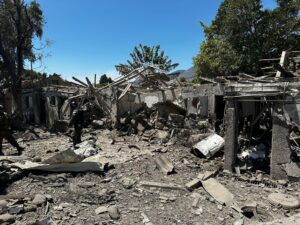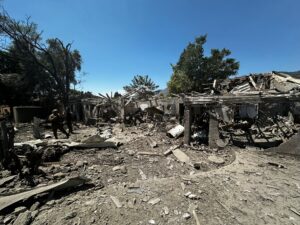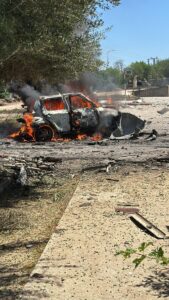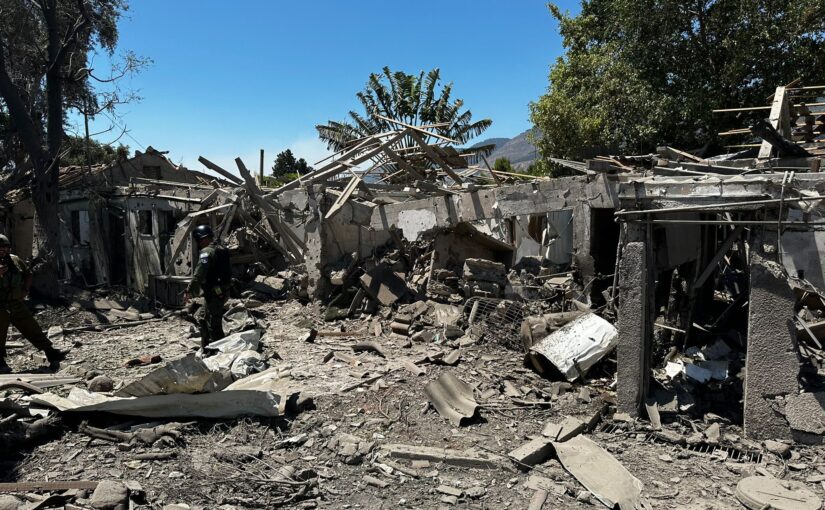Hi,
The Burkan (volcano in Arabic) rocket that hit Gibor base in Qiryat Shmona, couple of days ago, is a massive short range rocket produced by the Syrian Army in the 4th Armoured Division shops for the Hezbollah. It was developed by Iran, for the Syrian Civil war.
The rocket is basically a barrel of explosive that can hold 100kg to 500kg of explosives, but that comes on cost of the range as the rocket has a short range of only 10km.
It only cost 400$, very cheap when compared to the cost of the anti-tank missiles used by Hezbollah. It is also very easy and simple to launch, and can be launched the same way a mortar shell can be launched fro pick-ups, improvised launching sites or underground location.
As a rocket you would have expect it to have a low precision, but Hezbollah have a very high precision in the location it aimed to.
Just look on the destruction one rocket had done to the structures and buildings on the base and you understand what that rocket can do. The damage and destruction that it would if it will hit a residential building.
It might be that some of those rockets are what lit the fire yesterday in Golan heights around Katzrin.
The Houthis are also producing Burkan Missiles (Burkan-1, Burkan-2). Which are larger, much more expensive short-range ballistic missile (SRBM).
A link to a video of an unexploded Burkan rocket.
Take Care
Gad
 The destruction one Burkan rocket did in Gibor base in Qiryat Shmona
The destruction one Burkan rocket did in Gibor base in Qiryat Shmona
 Another angle of the destruction The rocket did in Gibor base in Qiryat Shmona
Another angle of the destruction The rocket did in Gibor base in Qiryat Shmona
 Shredded cars from the rocket explosion
Shredded cars from the rocket explosion
A video of the destruction one Burkan rocket did in Gibor base in Qiryat Shmona
Hezbollah publish of the launch of the Burkan rocket that hit Gibor base couple of days ago

